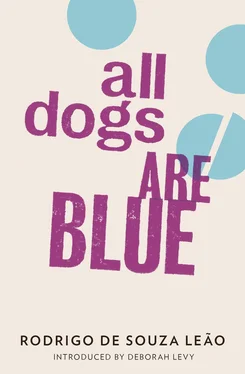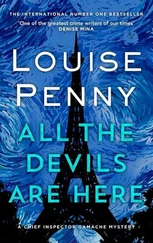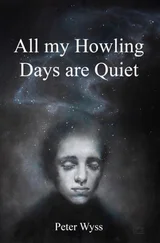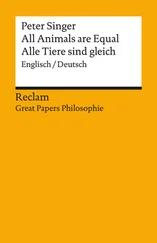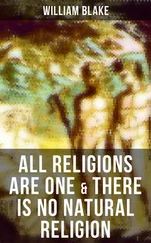Rodrigo Leao - All Dogs are Blue
Здесь есть возможность читать онлайн «Rodrigo Leao - All Dogs are Blue» весь текст электронной книги совершенно бесплатно (целиком полную версию без сокращений). В некоторых случаях можно слушать аудио, скачать через торрент в формате fb2 и присутствует краткое содержание. Год выпуска: 2013, Издательство: And Other Stories Publishing, Жанр: Современная проза, на английском языке. Описание произведения, (предисловие) а так же отзывы посетителей доступны на портале библиотеки ЛибКат.
- Название:All Dogs are Blue
- Автор:
- Издательство:And Other Stories Publishing
- Жанр:
- Год:2013
- ISBN:нет данных
- Рейтинг книги:4 / 5. Голосов: 1
-
Избранное:Добавить в избранное
- Отзывы:
-
Ваша оценка:
- 80
- 1
- 2
- 3
- 4
- 5
All Dogs are Blue: краткое содержание, описание и аннотация
Предлагаем к чтению аннотацию, описание, краткое содержание или предисловие (зависит от того, что написал сам автор книги «All Dogs are Blue»). Если вы не нашли необходимую информацию о книге — напишите в комментариях, мы постараемся отыскать её.
All Dogs are Blue Due to his mental fragility,
rarely left his house and yet, through social media, blogging, and e-mail, he became close to many Brazilian writers and poets and remains highly regarded today.
All Dogs are Blue — читать онлайн бесплатно полную книгу (весь текст) целиком
Ниже представлен текст книги, разбитый по страницам. Система сохранения места последней прочитанной страницы, позволяет с удобством читать онлайн бесплатно книгу «All Dogs are Blue», без необходимости каждый раз заново искать на чём Вы остановились. Поставьте закладку, и сможете в любой момент перейти на страницу, на которой закончили чтение.
Интервал:
Закладка:
Rodrigo Souza Leao
All Dogs are Blue
For Leonardo Gandolfi, Franklin Alves Dassie, Silvana Guimarães and Iosif Landau
Introduction
‘She’d fallen in love with the craziness in me.
Sometimes lunatics are very seductive.’
All Dogs are Blue is a comic modernist novel about being messed up — and then being messed up even more by numbing doses of pharmaceuticals. Rodrigo de Souza Leão is very clear about what has happened to his thirty-six-year-old narrator. He has swallowed ‘a chip’, and the chip makes him do things he doesn’t want to do. Set in a mental asylum in Rio de Janeiro, Souza Leão’s autobiographical last novel is about a whole lot of other things too: the drunken street sweepers from the favelas who somehow also end up in the asylum; the narrator’s teenage years growing up bookish and paranoid; his kindly parents who are pushed to the limits of their empathy and endurance; a blue toy dog which is both childhood companion and the colour of the narrator’s medication. It may also refer to the better-known black dog of melancholia — but your everyday black dog is just a mutt, whereas Souza Leão’s blue dog is a rare breed.
Rest assured that we are in the hands of the most reliable of narrators, despite his illness — which is diagnosed as belonging to the family of schizophrenias. Whatever, he totally knows the score: ‘Why do all crazy people have the same paranoias?’ That’s a reliably interesting question. Reliable? Doesn’t he turn himself into a plant? Yes, he is reliably crazy. But he is also reliably lucid, astute and witty. He doesn’t attempt to delude his readers so much as try to get a grip on his own delusions. If he is coshed into silence by the high doses of medication ‘bayoneted’ into his veins, he is also reliably vocal about the experience — about what it’s all for: ‘all this to keep a state of order. We’re the minority, but at least I say what I want.’ He is sad about his situation (it’s no joke), yet he is intellectually switched on and reliably spirited.
Souza Leão is a mind-blowing poet; his attitude seems to be something like: Why not flaunt the language(s) that madness has taught me? If I’m tri-lingual and didn’t even have to pay a tutor or travel agent to pick up the lingo, that’s the pay-off for all this suffering. He was aware that he had to use everything his illness had given him in order to write — and everything it had taken away from him too. To help him get through his day in the asylum, our narrator hallucinates two friends: one is called Rimbaud and, when he’s not riding an elephant to Africa, he is on-side and loyal; the other is Baudelaire, but he’s more of a fair-weather friend and can be unsociable.
In May 1871, aged sixteen, Rimbaud wrote a letter to his teacher, Georges Izambard, explaining his teenage poetic philosophy:
I’m now making myself as scummy as I can. Why? I want to be a poet, and I’m working at turning myself into a seer. You won’t understand any of this, and I’m almost incapable of explaining it to you. The idea is to reach the unknown by the derangement of all the senses. It involves enormous suffering, but one must be strong and be a born poet. It’s really not my fault. (trans Graham Robb, 2000)
Rodrigo de Souza Leão would have been aware of this letter — it might have helped him figure that the (involuntary) derangement of his own senses was not useless material. His narrator tells us of his own teenage years, in which he sounds a little like Rimbaud: ‘I was possessed by a fertile spirit of modern madness, one that has helped twentieth-century poetry many times.’
It’s not all about art though. The always-horny narrator often makes his father cry. His mother brings him tuna sandwiches to the hospital but she doesn’t want him to come home. If life in an insane asylum is actually very dull, Souza Leão’s subtle achievement is that he evokes the dull and deadening days without ever being boring or making them more exotic than they are. Everything that is interesting about the novel can be found in its light, laconic tone. Above all, this is a novel driven by tone. In this sense it reminds me of Houellebecq’s first novel, Extension du domaine de la lutte , or Whatever .
Souza Leão’s narrator doesn’t know which is more of a nightmare, waking or sleeping — but when he is awake he always gives cigarettes to the lunatic who bangs his head against the wall. He wonders what would happen if the lunatic were a footballer: ‘His headers would be unstoppable. After all that banging his head against walls, he’d slam in headers from anywhere. Maybe he’d get called up to play for Brazil.’
The narrator wakes up one day ‘wanting to say beautiful things’. He picks a flower in the garden and takes it back to his room. The nurse asks him if he’s ‘gone gay’. The asylum gardens are full of butterflies. Slums surround the asylum and he can hear music playing day and night. In All Dogs are Blue , the lives of the poor and the insane are knotted together. The father figure is knotted together too. From his bed, he can see the Christ statue on the hill. Maybe it’s the sun setting, maybe it’s the injections, but Christ seems to be always golden. When he kisses his own father’s face, he wonders, ‘Is it the kiss of Judas? Will I betray my father in my madness?’ A feral murderer is admitted to the asylum. He terrifies everyone and shits wherever he likes. Yet this murderer is scared of the fragile shape-shifting narrator (medication has made him fat and bloated) because his voice reminds him of his own father who beat him.
All Dogs are Blue knows that it is telling us about the layers of language at play in both poetry and psychosis. In this sense, the spare, poetic prose won from the original Portuguese in this translation by Stefan Tobler and Zoë Perry is a breathtaking achievement. Thanks to their skill, we hear Souza Leão’s multiple associations building, and if we want to, we will find a network of signifiers linking words with other words. Or we can just go with the story and enjoy its exuberance.
The first chapter of the novel is ironically titled ‘It all went Van Gogh’. Perhaps Leão had read the poet and playwright Antonin Artaud’s luminous essay titled ‘Van Gogh: the man suicided by society’. Here is what Artaud said about the psychiatry of his generation:
In comparison with the lucidity of Van Gogh, which is a dynamic force, psychiatry is no better than a den of apes who are themselves obsessed and persecuted and who possess nothing to mitigate the most appalling states of anguish and human suffocation but a ridiculous terminology,
worthy product of their damaged brains. (trans Helen Weaver, 1976)
In this essay, Artaud (who had also spent time in mental institutions) found a startling poetic image to describe Van Gogh’s state of mind — and perhaps his own. Artaud believed that the bullet that killed Van Gogh was in his stomach before he shot himself, that it was already there while he was painting black crows smashing against the purple sky of Arles. In other words, Van Gogh was already committed to death before it happened. Artaud’s subversive notion of this bending of existential time leads to the kind of sorrow that can be too painful to accept unless the writer is calmly onside with the reader. All Dogs are Blue never deals out this sort of sorrow. Life is lived intensely and with gusto at the asylum in Rio. All Dogs are Blue kept me curious and it kept me laughing, especially when the evangelicals recruiting patients to the cause leave a leaflet near the narrator’s bed: ‘My God! Fundamentalists are taking over the world. They’re even coming here to recruit the utterly fucked.’
Читать дальшеИнтервал:
Закладка:
Похожие книги на «All Dogs are Blue»
Представляем Вашему вниманию похожие книги на «All Dogs are Blue» списком для выбора. Мы отобрали схожую по названию и смыслу литературу в надежде предоставить читателям больше вариантов отыскать новые, интересные, ещё непрочитанные произведения.
Обсуждение, отзывы о книге «All Dogs are Blue» и просто собственные мнения читателей. Оставьте ваши комментарии, напишите, что Вы думаете о произведении, его смысле или главных героях. Укажите что конкретно понравилось, а что нет, и почему Вы так считаете.
